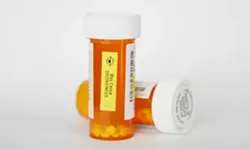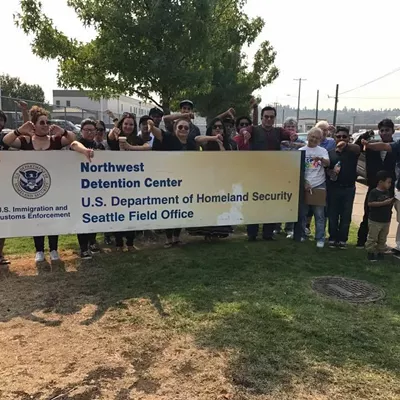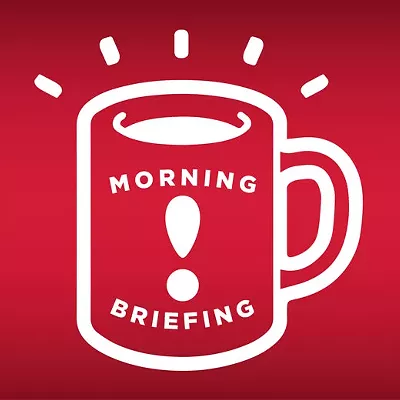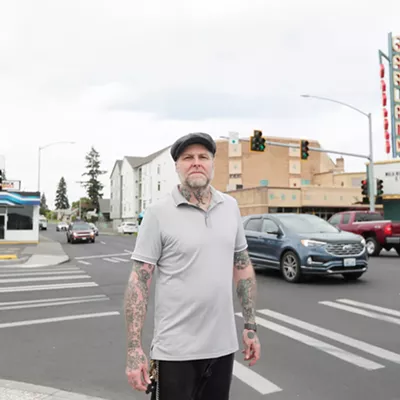Wednesday, September 20, 2017
WSU Spokane researcher exploring if online pain management tool can reduce opioid use
For people trying to manage chronic or persistent pain, it's possible that online programs may help.
Marian Wilson, assistant professor at Washington State University's College of Nursing in Spokane, has focused her research on helping people use online resources and alternative techniques to manage their pain and mental health, with an eye on empowering people to feel more confident in their ability to handle their own health.
As insurers and doctors are getting more reluctant to prescribe opioids for long-term pain treatment, that research is more important now, Wilson says.
"Especially now when we’re finding a lot of people with difficulty getting doctors to fill prescriptions, clinics are closing down and physicians are prescribing less, we have this growing group of people that relied on opioids, but are now having their access cut off," she says. "We never want those people to stay in pain and have no options."
In recent years, Wilson studied whether tools, such as the Goalistics Chronic Pain Management Program, are effective for helping people deal with pain.
Over the next five years, that work will continue, as she specifically investigates whether Goalistics can help people not only manage their pain better, but also reduce their dosage or help them stop using opioids.
The program teaches patients to recognize their own negative thinking, gives them tips for meditation and physical activity that can reduce pain, and explores social relationships, which can become strained for people with persistent pain, Wilson says.
"It aims to target some of the psychological aspects of pain management that people who have not been to a specific pain management clinic or a cognitive behavioral therapist might not have been exposed to, or if they have, maybe haven't been adopted into practice," she says.
For example, along with pain often comes a lot of negative thought patterns, Wilson says.
"One section is all about recognizing your thoughts and trying to replace those, which sounds fairly simple, but it's actually challenging to do," she says. "Most people don't realize their thought patterns. The more catastrophic your thoughts, the more anxious you are, the more tense."
The new research is part of the $2.5 million EMPOWER study, which will focus on 400 non-cancer patients. Wilson will study the outcomes for these patients along with lead investigator Theresa Winhusen, director of the Addiction Sciences Division at the University of Cincinnati College of Medicine.
ONLINE TOOLS: ACCESSIBILITY
Part of the appeal of online pain management is that it may be more affordable for patients and insurers, and more accessible for people who don't have clinics or therapists nearby, or the means to pay for them, Wilson says.
When she first started researching pain management, Wilson says she was working with emergency departments, which were largely focused on making sure people weren't returning to the ER for their pain management.
"As long as they don't come back to the ER, it's considered a success, but the problem is we don't know what happens to them," Wilson says. "We do know that comprehensive pain management is not easily accessible."
If they don't have insurance, forget about it, Wilson says. If they live in a rural area, there may be a lot of driving involved. If they can get connected with a specialist, there may be long waiting lists, which could mean a delay.
"So while that’s a nice thought that we could send everybody from the emergency department to a specialist, it doesn't always happen," Wilson says.
That's why she started looking for those online tools like Goalistics.
While her first study focused on whether people felt they could manage their pain, this time the focus will be on reducing opioid use.
Some of that involves explaining why certain techniques may help, and talking through challenges that patients may encounter. For instance, starting to exercise to help with pain might be unpleasant at first, Wilson says.
"While their pain may at first feel worse if they haven't been active for a while, generally, doing some activity will help with their pain," she says.
One important note is that the Goalistics program wasn't specifically designed to get people to stop using opioids, Wilson says, but it does teach about some of the possible negative impacts of long-term use, such as dependence, overdose and hyperalgesia (an increased sensitivity to pain).
"A lot of people on opioids haven't gotten that information" about hyperalgesia, Wilson says. "If you're going to have long-term pain, and be on opioids, at some point it may even make you more sensitive to pain."
She wants to be clear that she's not anti-opioid either, but cautious about their use, and pro-patient empowerment.
"Pain is a very individualized experience based on biology, culture, and psychology," Wilson writes in an email. "I believe 1) each person must experiment and become the expert in their own pain management, (politicians should really not be directing our national pain policies), and 2) opioids should not be the sole solution to managing pain."
Depending on the results of the study, Wilson hopes that health providers can better use technology to make treatments accessible to people, and perhaps convince insurance companies to pay for such treatments, which aren't typically covered right now.
"If this costs $100 to an insurance company, that’s quite an economic benefit," she says. "If we can show it’s helpful, maybe we can get insurance plans to invest in these things."
Tags: opioid , opioids , overdose , pain , pain management , Washington State University , WSU , Marian Wilson , Goalistics , online , News , Image



















